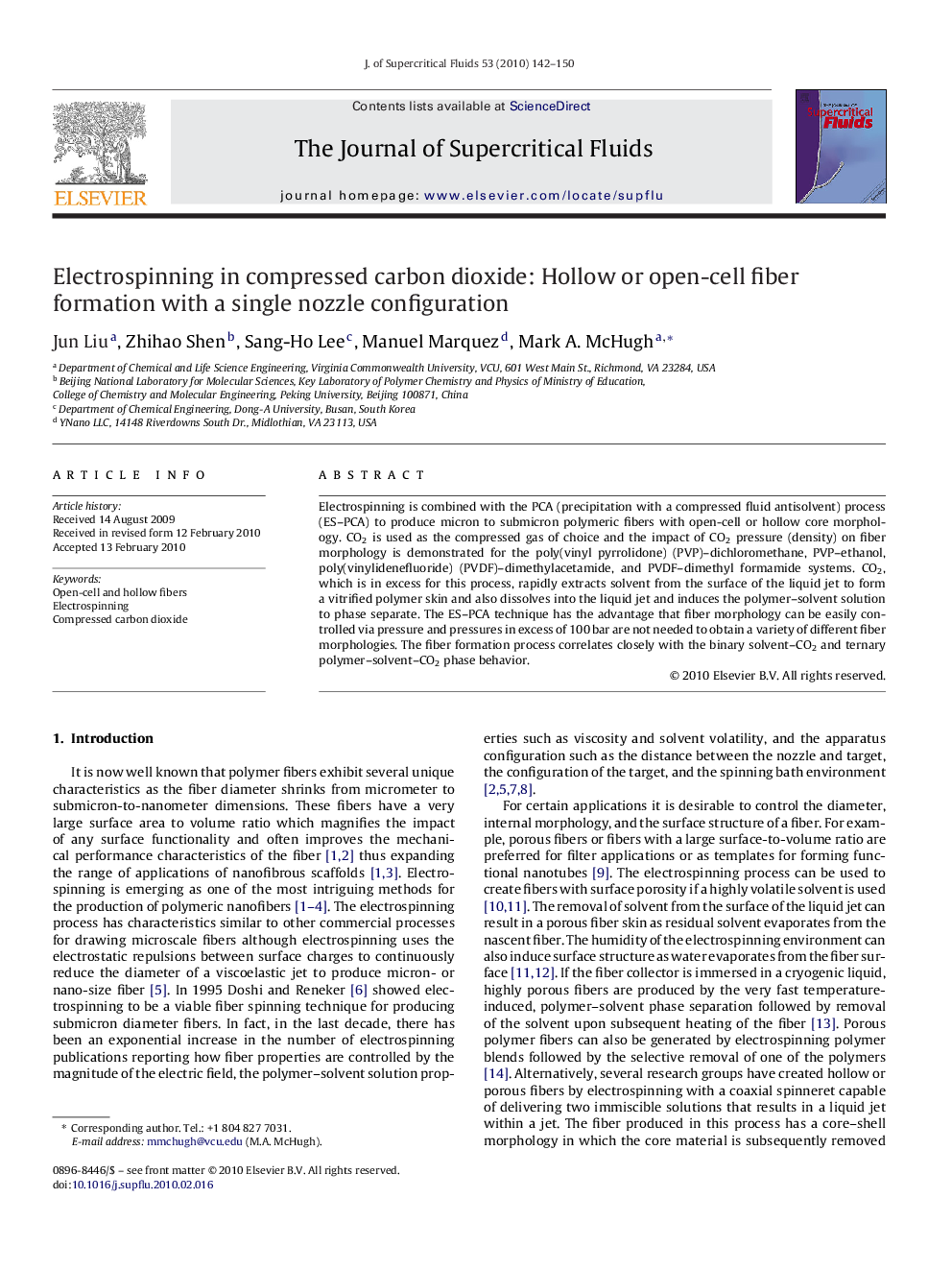| Article ID | Journal | Published Year | Pages | File Type |
|---|---|---|---|---|
| 231410 | The Journal of Supercritical Fluids | 2010 | 9 Pages |
Electrospinning is combined with the PCA (precipitation with a compressed fluid antisolvent) process (ES–PCA) to produce micron to submicron polymeric fibers with open-cell or hollow core morphology. CO2 is used as the compressed gas of choice and the impact of CO2 pressure (density) on fiber morphology is demonstrated for the poly(vinyl pyrrolidone) (PVP)–dichloromethane, PVP–ethanol, poly(vinylidenefluoride) (PVDF)–dimethylacetamide, and PVDF–dimethyl formamide systems. CO2, which is in excess for this process, rapidly extracts solvent from the surface of the liquid jet to form a vitrified polymer skin and also dissolves into the liquid jet and induces the polymer–solvent solution to phase separate. The ES–PCA technique has the advantage that fiber morphology can be easily controlled via pressure and pressures in excess of 100 bar are not needed to obtain a variety of different fiber morphologies. The fiber formation process correlates closely with the binary solvent–CO2 and ternary polymer–solvent–CO2 phase behavior.
Graphical abstractFigure optionsDownload full-size imageDownload as PowerPoint slide
